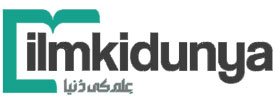-
 Home
Home
-
 News
News
Latest Educational News Stories
Daily update of all national, international news, picture stories, college / university announcements and educational events.
-
 Colleges
Colleges
Pakistan's Largest Database of Colleges and Universities
Explore Largest Directory of Private and Govt. Colleges, Universities and find best institute for your future Education.
-
 Courses
Courses
-
 Admission
Admission
-
 Lectures
Lectures
-
 Online Test
Online Test
Short Question
- 9th Class Physics Short Questions
- 9th Class Chemistry Short Questions
- 9th Class Math Short Questions
- 9th Class Biology Short Questions
- 9th Class Computer Short Questions
- 9th Class English Short Questions
- 10th Class Physics Short Question
- 10th Class Chemistry Short Question
- 10th Class Math Short Question
- 10th Class Biology Short Question
- 10th Class Computer Short Question
- 10th Class English Short Question
-
 Past Papers
Past Papers
-
 Date Sheets
Date Sheets
-
 Results
Results
Exam Results 2024
Check online Results 2024 Matric Inter BA BSc B.Com MA MSc M.Com CSS PCS MCAT ECAT of all educational boards and universities in Pakistan
-
 Study Abroad
Study Abroad
Study Abroad Programs and Opportunities for Pakistani Students
Explore free study abroad search to find programs, consultants, events to study in USA, UK, Australia, China, Malaysia and many others.
-
 Jobs
Jobs
-
 Tutors
Tutors
-
 More
More
-
 Apps
Apps
10th Class General Mathematics Chapter 1 KPK Boards Online Test

10th Class English Medium Subjects of KPK Boards
10th Class Urdu Medium Subjects of KPK Boards
MCQ's Test For Chapter 2 "10th Class General Mathematics Unit 1 Algebraic Formulae and Applications English Medium KPK Boards Online Mcqs"
Try The MCQ's Test For Chapter 2 "10th Class General Mathematics Unit 1 Algebraic Formulae and Applications English Medium KPK Boards Online Mcqs"
-
Total Questions15
-
Time Allowed20
10th Class General Mathematics Unit 1 Algebraic Formulae and Applications English Medium KPK Boards Online Mcqs
00:00
Question # 1
The Term which is used for fixed value is called..
Prepare Complete Set Wise Chapter 2 "10th Class General Mathematics Unit 1 Algebraic Formulae and Applications English Medium KPK Boards Online Mcqs" MCQs Online With Answers
-
Set 1
1 Questions
Start
10th class General Math Ch 1 (English Medium)
Here you can prepare 10th General Math chapter 1 online MCQ test with answers (Unit 1 Algebraic Formulae and Applications). Click the button for 100% free full practice test
Top Scorers Of Chapter 2 "10th Class General Mathematics Unit 1 Algebraic Formulae and Applications English Medium KPK Boards Online Mcqs" MCQ`s Test
-
A Asim Hussain 10 - Dec - 2021 03 Min 16 Sec 10/15 -
H hamza abid 12 - May - 2021 10 Min 50 Sec 8/15 -
Z Zain Abid 14 - May - 2022 03 Min 02 Sec 7/15 -
K Kiran Khan 19 - Feb - 2023 05 Min 39 Sec 7/15 -
M Muhammad Khalid 26 - Aug - 2023 10 Min 50 Sec 3/15 -
A Athsam Iqbal 19 - Nov - 2022 10 Min 50 Sec 0/15 -
M Muzammil Ali 20 - Jun - 2021 10 Min 50 Sec 0/15
| Sr.# | Question | Answer |
|---|---|---|
| 1 | The Term which is used for fixed value is called.. |
A. Variable
B. Constant
C. Fix
D. Polynomial
|




























